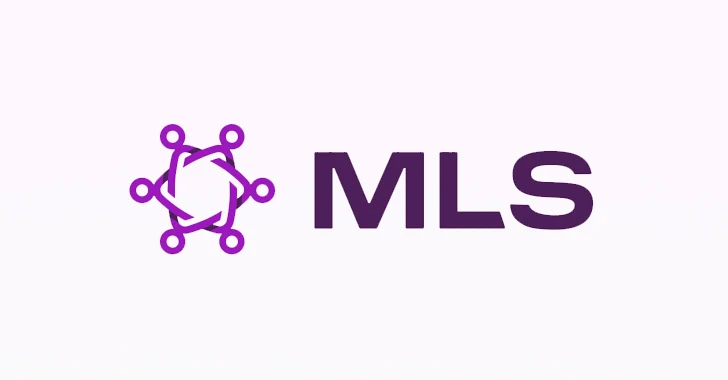In the fast-evolving real estate markets of Arab countries, sellers and brokers alike face one key question: How long will a property take to sell? Knowing the expected time a property will remain on the market before sale—referred to as Time-on-Market (TOM)—is vital for pricing strategies, marketing plans, and investment decisions.
Thanks to the rise of Multiple Listing Service (MLS) platforms and big data analytics, brokers and investors now have access to tools that predict the Time-on-Market with increasing accuracy. Using MLS data, enhanced by artificial intelligence (AI) and machine learning models, market participants can make smarter decisions, reduce uncertainties, and improve efficiency.
This article explains the concept of Time-on-Market predictions using MLS data, explores how these predictions work, discusses their benefits and challenges and highlights their practical applications in the real estate markets of Arab countries.
What is Time-on-Market (TOM)?
Time-on-Market (TOM) is the total period a property remains listed and available for sale or lease, from the moment it is first listed on the MLS until it is either sold or removed from the market.
For sellers, a shorter TOM generally means a faster sale and fewer holding costs such as maintenance, taxes, and financing. For buyers, properties with longer TOM might indicate overpricing, hidden issues, or lower demand.
In the traditional approach, estimating TOM relied heavily on agent experience and market intuition. However, such estimates could be inaccurate due to fluctuating market conditions, changing buyer preferences, or unforeseen events.
How MLS Data Powers Time-on-Market Predictions
MLS platforms store a wealth of historical and real-time data that is essential for predicting TOM. This data includes:
- Listing price and price changes over time
- Property type (villa, apartment, commercial unit, land, etc.)
- Location specifics, such as neighborhood, proximity to amenities, or transport
- Property size and features (bedrooms, bathrooms, floor area, finishes)
- Market conditions like seasonality and overall demand
- Previous sales data of similar properties in the area
- Agent activity such as the number of showings or inquiries
By analyzing this data, advanced algorithms can identify patterns and correlations that influence how quickly properties sell. For example, a studio apartment in downtown Dubai priced 10% below the market average may sell much faster than a similarly priced villa in a less popular suburb.
Machine Learning and AI in TOM Predictions

Machine learning (ML) models are computer algorithms that learn from historical data to make predictions about future events. In the context of real estate, ML can analyze thousands of past listings to understand what factors most influence TOM.
Some common machine learning techniques used include:
- Regression analysis to model relationships between property features and TOM
- Decision trees that segment properties into categories based on attributes
- Random forests and ensemble methods to improve prediction accuracy
- Neural networks for complex pattern recognition across multiple data points
These models continuously improve as new MLS data is fed into the system, adapting to market changes such as price fluctuations, economic shifts, or evolving buyer preferences.
Benefits of Time-on-Market Predictions for Arab Real Estate Markets
Time-on-Market prediction technology offers many advantages to various stakeholders in Arab countries:
For Sellers and Property Owners
Understanding expected TOM helps sellers set realistic listing prices and manage expectations. If a property is predicted to stay on the market longer than average, owners might consider price adjustments or home improvements to increase appeal.
It also aids financial planning. Knowing how long a property might remain unsold allows owners to estimate carrying costs and arrange financing accordingly.
For Real Estate Brokers and Agents
Agents can use TOM predictions to advise clients more accurately, improving trust and satisfaction. This data-driven approach enhances their competitive edge, helping them win listings by demonstrating market expertise backed by analytics.
Agents can also prioritize marketing efforts on listings expected to have longer TOM, deploying targeted campaigns or incentives to accelerate sales.
For Investors and Developers
Investors seeking rental income or capital appreciation benefit from TOM predictions by selecting properties likely to sell quickly or hold value better. Developers can use this insight to time new projects or price launches optimally.
In fast-growing urban centers like Riyadh, Abu Dhabi, or Cairo, where real estate markets can be volatile, TOM prediction tools reduce investment risk by grounding decisions in empirical data.
Challenges in Applying TOM Predictions in Arab Countries
While promising, the implementation of Time-on-Market prediction models faces several challenges in the Arab context.
Data Quality and Availability
MLS data quality varies widely across Arab countries and cities. While places like Dubai have highly sophisticated MLS systems with rich, up-to-date data, other markets may lack comprehensive or digitized listing data, limiting prediction accuracy.
Incomplete data, unreported price changes, or missing transaction records create gaps that machine learning models struggle to compensate for.
Market Diversity
Arab countries exhibit diverse real estate markets, ranging from luxury urban towers in Dubai and Doha to sprawling desert developments or older neighborhoods in Cairo and Amman. The factors influencing TOM in these markets can differ significantly, making universal prediction models less reliable.
Customization to local market conditions and property types is essential.
Legal and Regulatory Factors
Differences in property ownership laws, foreign investment rules, and transaction procedures across Arab countries impact market behavior. Predictive models must incorporate such factors to remain relevant.
Cultural and Behavioral Factors
In some Arab societies, property transactions may be influenced by family negotiations, social status, or off-market deals, which are harder to capture in MLS data.
How to Improve Time-on-Market Predictions in Arab Markets
To overcome these challenges and harness the full potential of TOM predictions, several strategies can be employed:
Enhance MLS Data Infrastructure
Governments, real estate authorities, and industry associations can invest in upgrading MLS platforms to ensure standardized, comprehensive, and real-time data capture. Encouraging wider participation from brokers and mandatory listing of all transactions can enrich datasets.
Develop Localized Prediction Models
Data scientists and real estate firms should develop machine learning models tailored to the specific nuances of each Arab market, considering factors like property types, cultural preferences, and local laws.
Integrate External Data Sources
Combining MLS data with economic indicators, demographic trends, infrastructure projects, and social media sentiment analysis can improve prediction robustness.
Educate Market Participants
Training brokers, developers, and investors on the use and interpretation of TOM predictions helps build trust and promotes data-driven decision-making.
Practical Applications of Time-on-Market Predictions
The power of TOM predictions goes beyond academic interest. Here are some ways Arab market participants can apply these insights:
Dynamic Pricing Strategies
Sellers can adjust listing prices proactively based on predicted TOM. For example, if a property is expected to linger, the price can be reduced incrementally to attract buyers.
Targeted Marketing
Properties predicted to have longer TOM may benefit from enhanced marketing efforts, such as virtual tours, professional staging, or promotions.
Investment Portfolio Management
Investors can select properties with shorter expected TOM to maximize liquidity or balance portfolios by mixing quick-turnover and long-term hold assets.
Market Trend Analysis
Real estate firms and authorities can track average TOM over time to gauge market health, identify bubbles, or predict slowdowns.
Case Example: Dubai’s Real Estate Market
Dubai’s real estate market offers an excellent example of a TOM prediction application. Platforms like Bayut and Property Finder leverage extensive MLS data combined with AI to offer sellers and buyers insights into how quickly different property types and locations sell.
For instance, studies show that studio apartments in Dubai Marina typically sell faster than larger villas in suburban areas, due to demand patterns favoring affordability and location. Brokers use this data to advise clients on pricing and timing, increasing transaction speed and satisfaction.
The integration of TOM prediction tools is now a key component of Dubai’s smart city and PropTech strategies, positioning it as a regional leader.
The Future of Time-on-Market Predictions in Arab Real Estate
As MLS systems evolve and data analytics become more sophisticated, TOM predictions will become increasingly precise and accessible. Emerging technologies like blockchain may add transparency to listings and transactions, further improving data quality.
Moreover, mobile applications and dashboards will empower all stakeholders to view real-time TOM forecasts, making the real estate process more transparent and efficient.
Ultimately, Time-on-Market predictions represent a significant step towards modernizing Arab real estate markets, making them more responsive, transparent, and investor-friendly.
Conclusion
Time-on-Market predictions using MLS data provide powerful insights that can revolutionize real estate transactions in Arab countries. By harnessing advanced analytics and machine learning, sellers, brokers, investors, and developers can make better-informed decisions, reduce risks, and optimize pricing and marketing strategies.
Despite challenges like data quality and market diversity, the growing adoption of PropTech solutions and MLS modernization efforts signal a promising future. Arab real estate markets stand to benefit enormously from embracing Time-on-Market predictions, fostering more efficient and dynamic property markets aligned with global trends.













